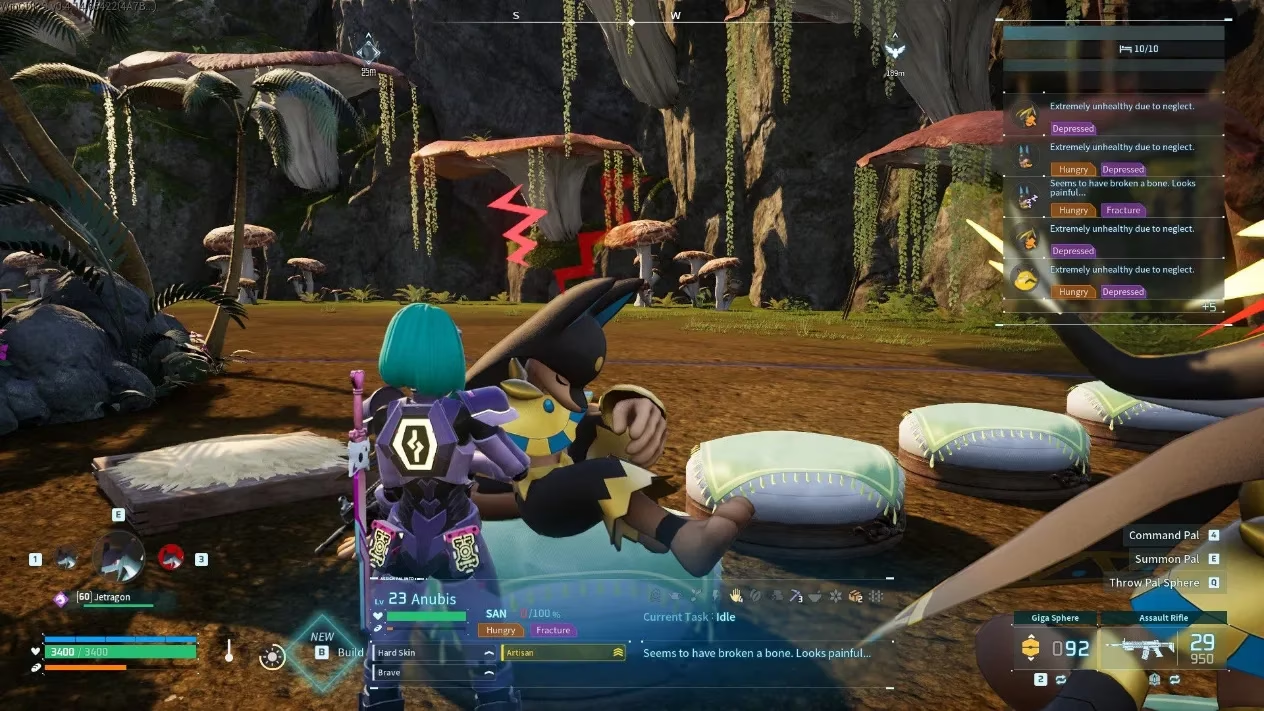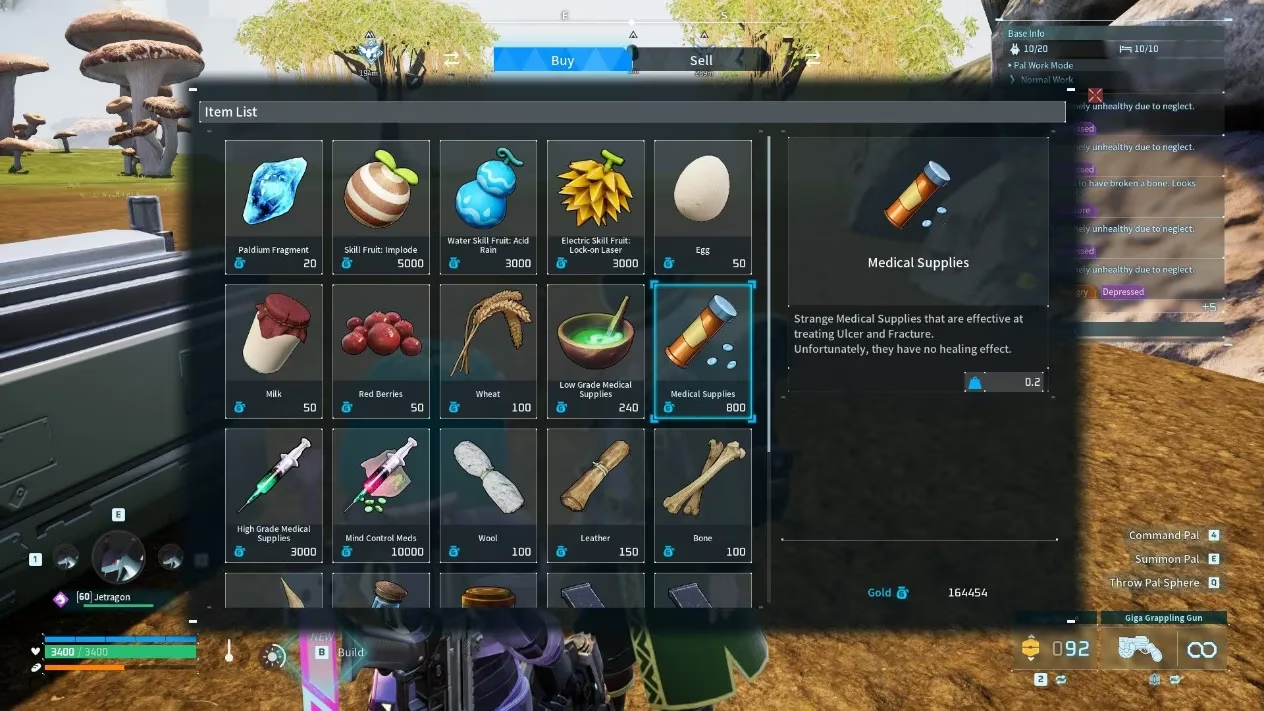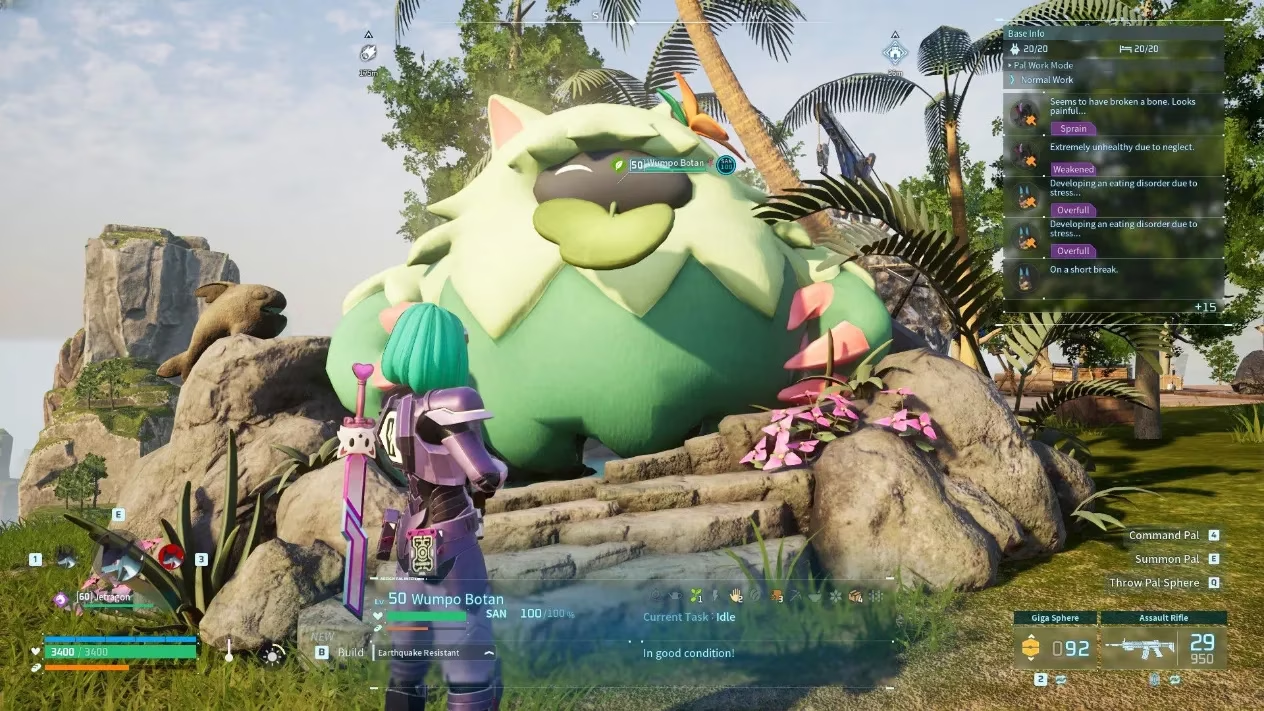Palworld Pal Health Guide
In the vibrant yet demanding ecosystem of Palworld, Pals serve as far more than combat companions. These creatures become essential workforce partners in base operations, gathering resources like wood and ore while assisting with complex crafting projects. Yet this symbiotic relationship comes with vulnerabilities—Pals frequently develop physical and psychological ailments ranging from fractures to depression when their needs go unmet. A sick Pal's productivity plummets, sometimes ceasing entirely when incapacitated. For players managing resource-heavy bases, maintaining Pal wellness becomes as crucial as strategic expansion in this monster-taming survival adventure.

The Spectrum of Pal Afflictions
Neglect manifests in diverse conditions that cascade in severity. Early signs like Hungry or Cold escalate to critical states when ignored:
-
🔴 Physical injuries: Sprains → Fractures → Major Injuries → Incapacitation
-
💔 Psychological strain: Weakened → Depressed → Mental Collapse
-
🍽️ Digestive issues: Starving → Overfull → Ulcers
Work efficiency tanks at each stage, with incapacitated Pals requiring immediate intervention before returning to duties. Unfortunately, pathfinding glitches often trap Pals in hazardous zones, accelerating these conditions despite player precautions.
Healing Protocols and Treatments
When illness strikes, a two-pronged approach restores wellness:
- Medicinal Solutions
Crafted at Medicine Workbenches using:
| Medicine Grade | Required Materials |
|----------------|---------------------|
| Low-Grade | Bones + Horns |
| Standard | Ingots + Rare Herbs |
| High-Grade | Pal Fluids + Crystals |
- Therapeutic Rest
Assign beds for recovery or temporarily store afflicted Pals in Palboxes

For players weary of resource farming, Wandering Merchants offer alternatives:
-
Located near Marsh Island Church Ruins and Small Settlement
-
Stock tiered medical supplies for immediate relief
-
Particularly useful during ore shortages or when managing large colonies
Proactive Wellness Strategies
Prevention hinges on environmental design and workload management:
🛏️ Sleeping Quarters
Assign individual beds—sleep deprivation triggers sanity loss and sluggish performance. Cluster beds away from workstations to create clear rest zones.
🍲 Nutrition Management
Position Feed Boxes centrally on flat terrain. A starving Pal progresses through injury stages:
flowchart LR
A[Starving] --> B[Minor Injury]
B --> C[Major Injury]
C --> D[Incapacitated]
♨️ Sanity Preservation
Hot Springs are non-negotiable for high-stress assignments:
-
Basic version stabilizes mood
-
High Quality variant accelerates sanity recovery
Install near mining/woodcutting operations where exhaustion accumulates fastest

⚖️ Workload Moderation
While Monitoring Stands enable work intensification during resource crunches, permanent overdrive backfires. Alternate between modes:
-
⏱️ Rush Mode: Short bursts for urgent projects
-
🍃 Normal Mode: Default sustainable pace
-
🌿 Recovery Days: Reduced tasks after major operations
The Caretaker's Dilemma
Despite meticulous planning, Pal psychology remains unpredictable. Some species develop eating disorders despite abundant food, while others spiral into depression without apparent triggers. This organic unpredictability challenges players to balance productivity with empathy—a dynamic reflecting real-world husbandry complexities. When does optimized resource extraction become ethical exploitation? Can true companionship thrive within transactional labor systems? These questions linger as trainers navigate Palworld's morally ambiguous ecosystems.
The following breakdown is based on data referenced from Entertainment Software Association (ESA), a leading source for industry trends and policy analysis. ESA's research into player engagement and game design underscores the importance of balancing challenge and well-being in virtual ecosystems, echoing Palworld's emphasis on maintaining creature health and ethical resource management within gameplay loops.

Leave a Comment
0 Comments